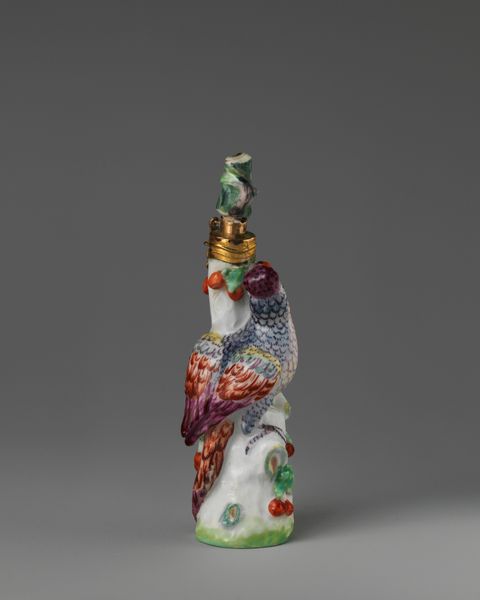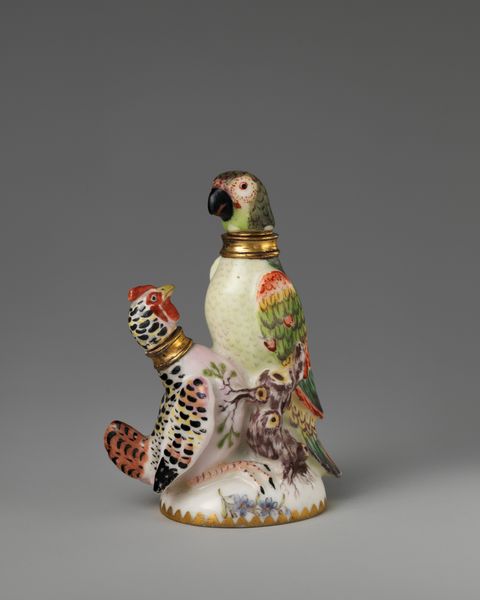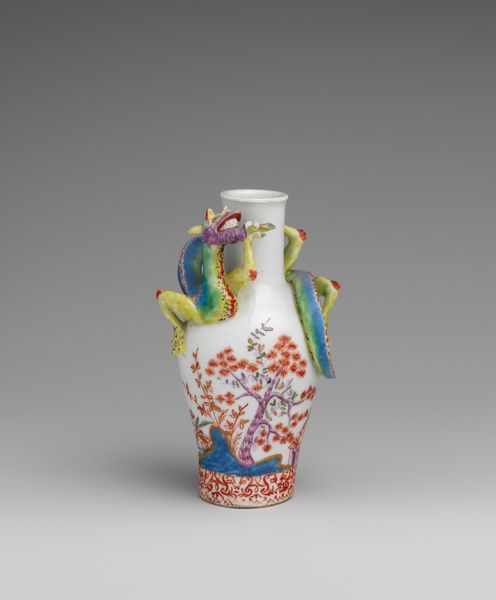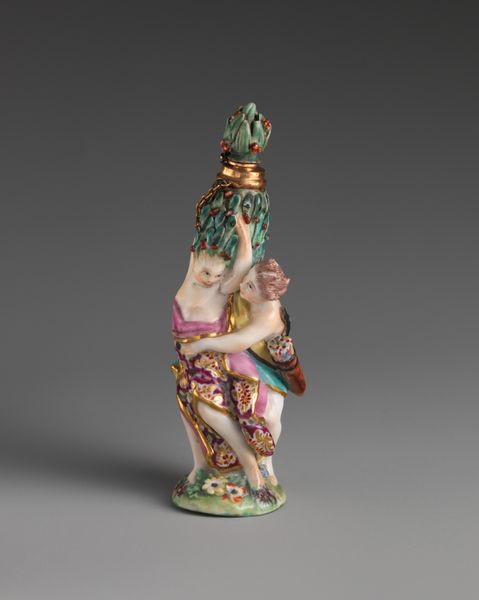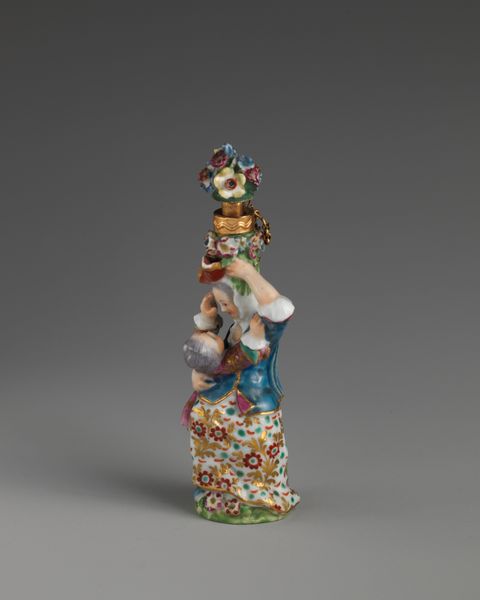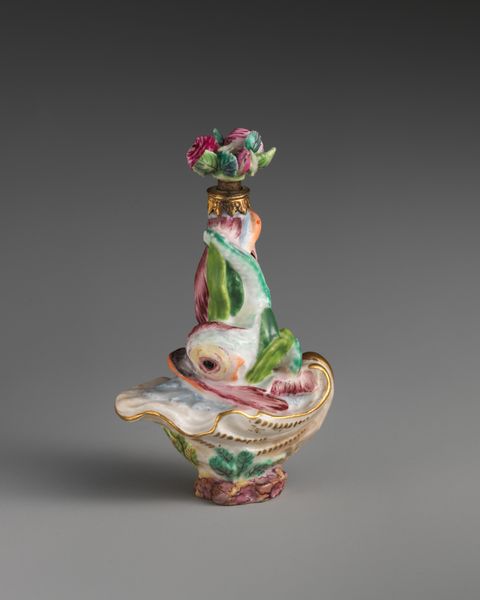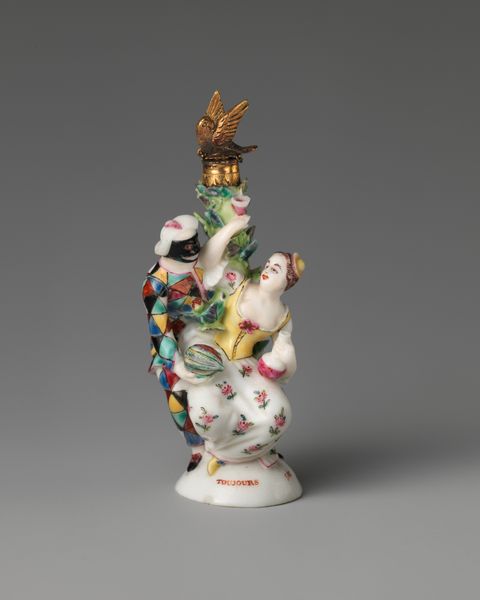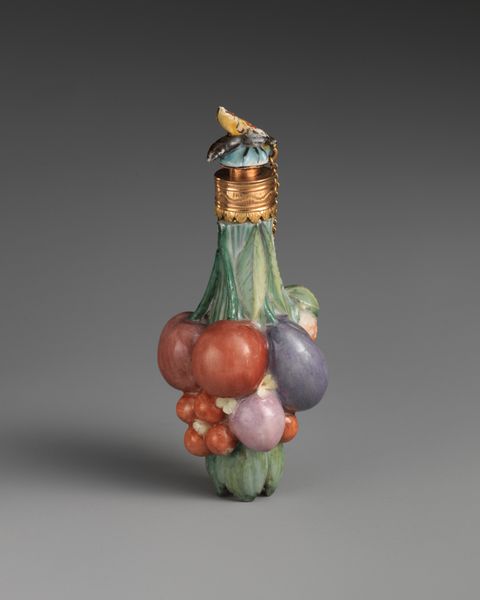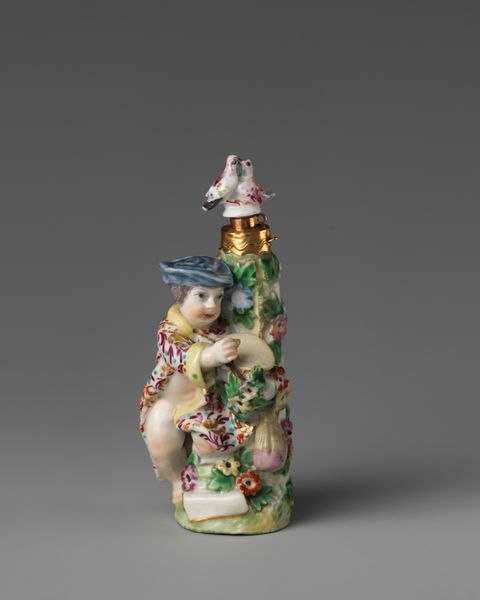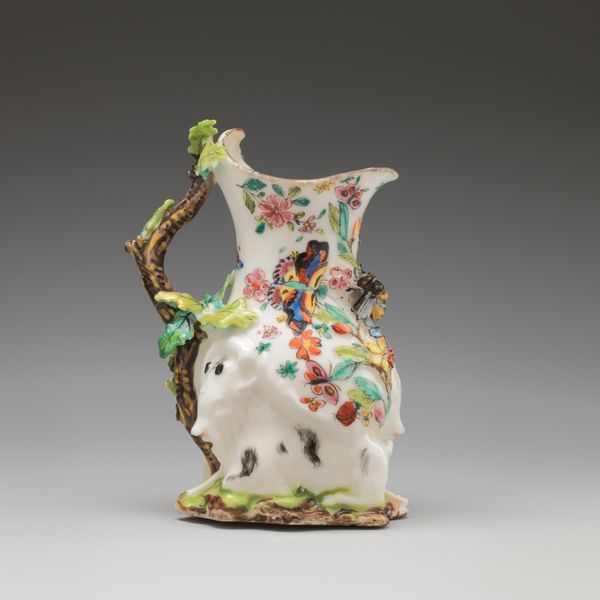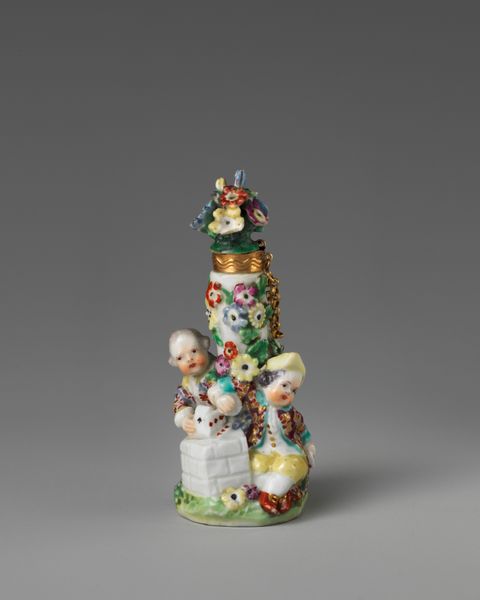
ceramic, porcelain, sculpture
#
ceramic
#
flower
#
porcelain
#
fruit
#
sculpture
#
decorative-art
#
rococo
Dimensions: Overall: 2 1/2 × 1 1/4 in. (6.4 × 3.2 cm)
Copyright: Public Domain
Curator: This is "Fruit and Flowers," crafted between 1755 and 1765 by the Chelsea Porcelain Manufactory. It resides here at the Met. This vibrant porcelain sculpture seems like a celebration of nature's bounty. How do you react to its composition and materiality? Editor: It definitely gives off a feeling of playful opulence, with all the fruit and flower details molded into this ornate little perfume bottle! As someone interested in materiality, what jumps out at you when you consider the social and economic forces at play in its creation? Curator: Well, think about porcelain itself. It was a highly prized material in Europe during this period. To understand that desire we must consider its sourcing. European manufacturers dedicated massive resources to replicating its delicacy which had profound ramifications. We can consider "Fruit and Flowers" not only as a symbol of Rococo art but as an assertion of control of manufacturing power in the West through consumption. Editor: So, beyond just appreciating the artistry, you're prompting us to think about the global exchange of knowledge, labor, and materials required to create such an object? Curator: Precisely! The intricate floral and fruit details are also meticulously hand-painted. This makes us consider the workforce and the degree of special skill required in each painting workshop to achieve a certain naturalism. Each carefully painted detail speaks volumes about a larger commercial market. What’s particularly curious to you about those small components and forms? Editor: I never considered this piece as part of the colonial system; instead, I appreciated it for its artistic charm. This forces me to think more critically about consumerism as labor within fine art and challenge my interpretation. Curator: That's exactly the point! By examining art through a materialist lens, we reveal intricate networks of production and labor relations woven into each brushstroke and firing. Editor: This conversation shifted my appreciation for the sculpture, as I feel more conscious of its deeper meaning. Thank you! Curator: Indeed, examining art through the lens of its production allows for a richer, more nuanced understanding of its place in history.
Comments
No comments
Be the first to comment and join the conversation on the ultimate creative platform.
